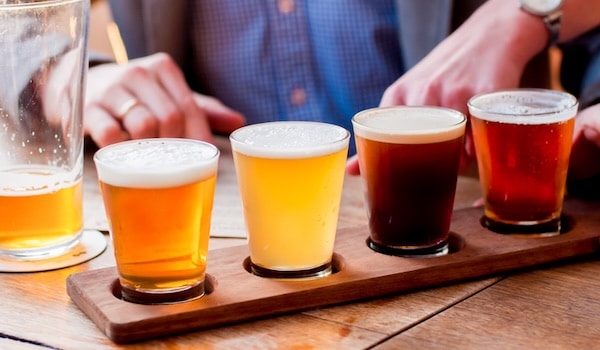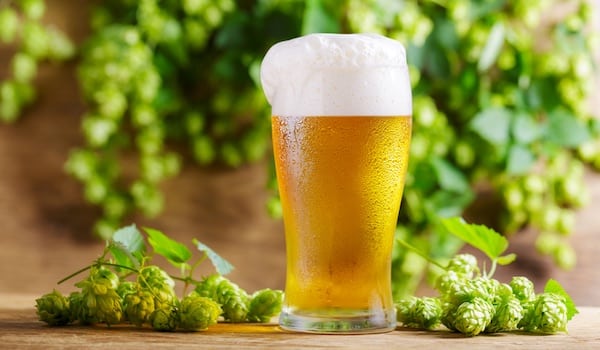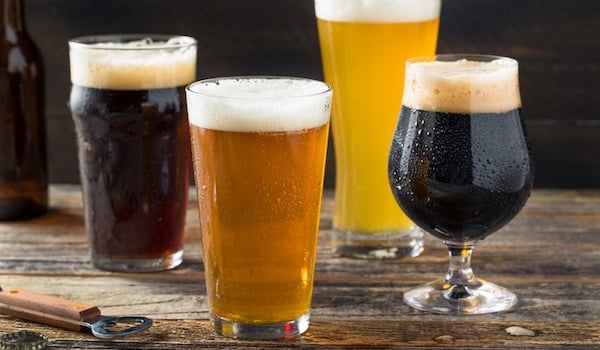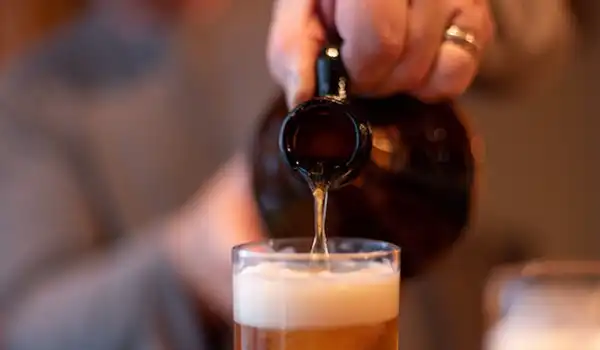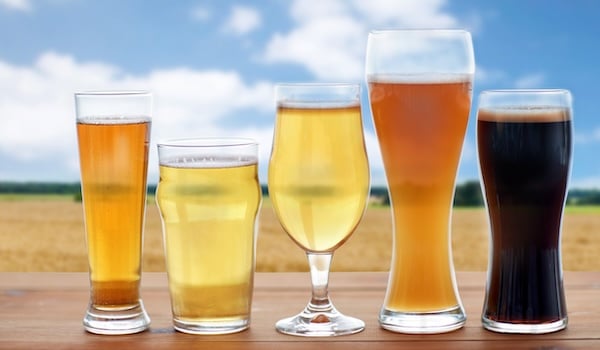
In This Article
- Introduction
- Why Beer Glasses Matter
- The Most Common Beer Glass Types
- Matching Glass to Beer Style
- Do You Really Need All These Glasses?
- Care and Maintenance
- Final Thoughts
- Sign Up for Our Newsletter
Introduction
Ever notice how a hazy IPA just looks right in one of those curvy, ridged glasses, but kind of flat when it’s poured into a plain pint? Or how a German hefeweizen practically demands a towering glass with a foamy crown? That’s no accident.
Beer isn’t just about flavor — it’s about aroma, presentation, and the little rituals that make drinking it more than just “having a beer.” The glass you choose changes the way bubbles rise, how hops hit your nose, and even how quickly the beer warms in your hand.
Sure, you can drink everything out of a shaker pint (and plenty of people do). But if you’re curious about how to make your favorite brew taste even better, knowing which glass to use is the easiest upgrade you’ll ever make.
Related Post:
Why Beer Glasses Matter
Here’s the truth: beer glasses aren’t about snobbery. They’re about physics.
- The shape of the glass directs aroma toward (or away from) your nose.
- The rim can keep foam intact or let it collapse instantly.
- The body can highlight color, haze, or carbonation.
- The weight and feel make a difference too — holding a frosty stein is a very different vibe from cradling a delicate tulip.
Think of it like plating food. Sure, pizza tastes fine from a cardboard box, but served on a hot stone with fresh basil? Suddenly, you’re in Naples.
The Most Common Beer Glass Types
Pint Glasses (American & Nonic)
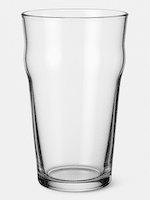
The workhorse of the beer world. If you’ve ordered a beer in the U.S., chances are it showed up in a shaker pint. Straight sides, 16 ounces, easy to stack. Functional, but not exactly exciting.
In the UK, though, you’ll often get a Nonic pint. That little bulge near the top isn’t just for looks. It helps with grip, prevents chipping, and keeps foam hanging around longer.
- Best for: IPAs, pale ales, stouts, lagers.
- Try this: Sierra Nevada Pale Ale in an American pint for balance; Fuller’s London Pride in a Nonic for tradition.
- Food pairing: Burgers and fries. The pint is a pub glass, so pair it with pub food.
Tulip Glass
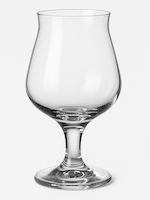
If you only buy one “fancy” beer glass, make it a tulip. Its curved lip captures foam, while the bowl traps aroma so every sip hits your nose before your tongue.
- Best for: Belgian ales, aromatic IPAs, saisons, sours.
- Try this: Dogfish Head 90 Minute IPA or Chimay Tripel. Both shine in a tulip.
- Food pairing: Mussels with garlic and herbs, or a tangy goat cheese salad. The tulip loves aromatic pairings.
Weizen Glass
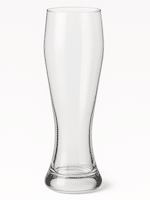
Tall, elegant, and made for wheat beers. The slim base shows off haze, and the wide mouth creates a towering head of foam.
- Best for: Hefeweizens, witbiers.
- Try this: Weihenstephaner Hefeweissbier or Hoegaarden.
- Food pairing: Roast chicken with lemon, or even brunch omelets — the banana-and-clove notes of wheat beers play beautifully with eggs.
Snifter
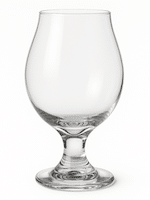
Think brandy glass, but for beer. A snifter concentrates aroma and encourages slow sipping. Perfect for strong ales you want to savor rather than gulp.
- Best for: Barleywines, imperial stouts, Belgian strong dark ales.
- Try this: Founders KBS or JW Lee’s Harvest Ale.
- Food pairing: Rich desserts like chocolate torte or tiramisu.
Mug/Stein
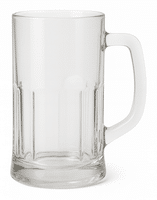
Sturdy, heavy, and meant for clinking. Mugs (and their German cousins, the steins) keep beer cool thanks to thick glass walls, and the handle keeps your hand from warming the brew too quickly.
- Best for: Lagers, Märzen, Festbiers.
- Try this: Hofbräu Original or Paulaner Oktoberfest Märzen.
- Food pairing: Bratwurst, sauerkraut, pretzels — basically Oktoberfest on a plate.
Goblet/Chalice
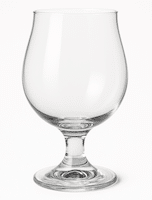
Wide-mouthed and dramatic, goblets are designed for big, complex Belgian ales. The shape lets strong carbonation bubble up while offering plenty of surface area for aroma.
- Best for: Belgian tripels, quads, and strong golden ales.
- Try this: Westmalle Dubbel or La Trappe Tripel.
- Food pairing: Roast lamb or a rich beef stew — hearty food for hearty beer.
Stange Glass
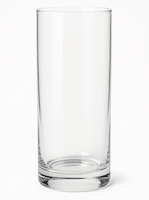
Tall, narrow, and unassuming. You won’t see it often outside Germany, but in Cologne, it’s the only proper way to drink Kölsch. The slender shape keeps delicate beers crisp and effervescent.
- Best for: Kölsch, light German ales.
- Try this: Reissdorf Kölsch.
- Food pairing: Light fish dishes, fresh salads, or grilled veggies.
Teku Glass
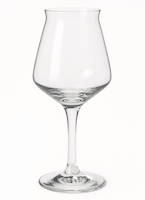
A modern invention with a cult following. The Teku combines the elegance of a wine glass with the aroma-trapping qualities of a tulip. It’s become a symbol of the craft beer world — serious, a little artsy, but undeniably effective.
- Best for: IPAs, saisons, wild ales, and anything you’d drink thoughtfully.
- Try this: Hill Farmstead Saison Anna or any limited-release IPA.
- Food pairing: Artisanal cheese board — it matches the vibe.
Hazy IPA Glass (Spiegelau IPA Glass)
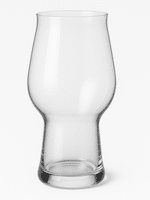
And here’s the darling of the modern beer scene. The ribbed base agitates the beer as you pour, releasing hop aroma. The bowl showcases haze and color, while the tapered top sends a wave of citrus and tropical notes straight to your nose. It’s functional, yes, but also ridiculously photogenic.
- Best for: NEIPAs, hazy pales, double dry-hopped IPAs.
- Try this: Tree House Julius, Other Half DDH IPA, or a hazy from your local brewery.
- Food pairing: Spicy tacos al pastor or buffalo wings. The citrusy hops slice right through the heat.
Matching Glass to Beer Style
Sometimes you just want the quick version. Here’s the cheat sheet:
| Glass Type | Best For | Example Beers |
|---|---|---|
| American Pint | IPAs, lagers, stouts | Sierra Nevada Pale Ale, Guinness |
| Nonic Pint | Bitters, milds, pale ales | Fuller’s London Pride |
| Tulip | Belgian ales, aromatic IPAs, sours | Chimay Tripel, Dogfish Head 90 Minute |
| Weizen | Wheat beers, Hefeweizens | Weihenstephaner Hefeweissbier |
| Snifter | Strong ales, imperial stouts, barleywine | Founders KBS, JW Lee’s Harvest |
| Mug/Stein | Lagers, Oktoberfest beers | Paulaner Märzen |
| Goblet/Chalice | Tripels, quads, Belgian strong ales | Westmalle Dubbel |
| Stange | Kölsch, light ales | Reissdorf Kölsch |
| Teku | IPAs, saisons, wild ales | Hill Farmstead Saison |
| Hazy IPA Glass | NEIPAs, hazy pales, DDH IPAs | Tree House Julius, Other Half DDH IPA |
Do You Really Need All These Glasses?
Not really. Unless you’re running a taproom, you don’t need ten different glass types lining your shelves.
If you’re stocking at home, start with:
- Pint glass (all-rounder).
- Tulip glass (for aromatic beers).
- Snifter (for big winter stouts).
- Hazy IPA glass (if you’re a hophead).
That’s more than enough to cover 90% of what you’ll drink. The rest are fun extras — great if you love the ritual, but not essential.
Care and Maintenance
Glassware can make or break a beer, and not just by shape. A glass with soap residue kills head instantly. A frosted pint may look cool, but it flattens flavor.
Quick guide:
- Rinse with warm water after use.
- Skip the frosty freezer trick.
- Let glasses air dry upside down.
A clean, “beer-ready” glass makes more difference than people realize.
Final Thoughts
The right glass won’t magically turn a bad beer into a great one, but it will make a good beer unforgettable. Presentation, aroma, mouthfeel — they all come alive in the right vessel.
So whether you’re sipping a Guinness from a pint, swirling a saison in a Teku, or showing off your hazy in a Spiegelau IPA glass, remember: it’s not just about what’s in the glass, but the glass itself.
Let’s Talk Beer!
💬 What’s your favorite beer + glass combo? Drop it in the comments.
📸 Tag us on Instagram @craftbeermenow to be featured.
✉️ Want more guides like this? Sign up for our newsletter and never miss a pour.

